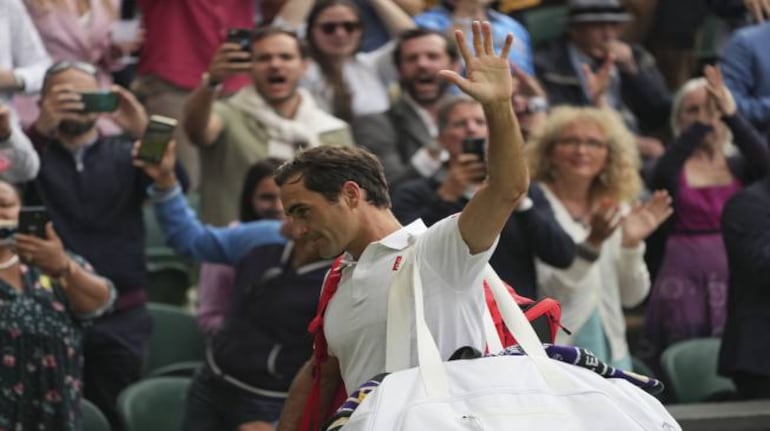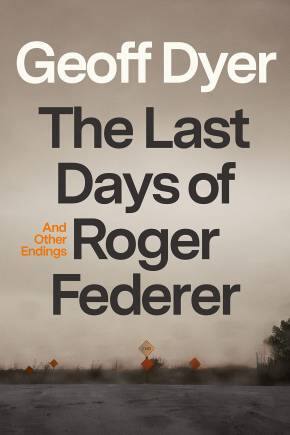



How do artists and athletes deal with the ravages of time? Do they discover new vistas, soldier on, or accept the inevitable? The answers lie between Robert Browning’s Rabbi Ben Ezra, who felt that “the best is yet to be”, and a weary Yeats, who lay down “in the foul rag and bone shop of the heart”.
For Edward Said, the late work of some creators reflected disharmony and difference. In his On Late Style, he wrote about how this gave it “the power to render disenchantment and pleasure without resolving the contradiction between them”.
Beethoven’s last piano sonatas and quartets fall into this category,  according to Said. The German composer is also among those discussed in Geoff Dyer’s new book, impishly titled The Last Days of Roger Federer. It is – spoiler alert – about much more than Roger Federer.
according to Said. The German composer is also among those discussed in Geoff Dyer’s new book, impishly titled The Last Days of Roger Federer. It is – spoiler alert – about much more than Roger Federer.
Dyer, now in his 60s, ruminates on talent in the shadow of age, on the task of displaying expertise even as the remaining grains of sand slip out of the hourglass. Among the issues that first interested him in the subject was the prospect of Federer walking off the court for the last time.
“It seemed important that a book underwritten by my own experience of the changes wrought by ageing,” he writes, “should be completed before Roger’s retirement, in the long twilight of his career”. Dyer’s prose, which has moved out of the shade of Thomas Bernhard, probes this from various angles by examining the later lives of writers, painters, musicians and sportspeople through the prism of his own circumstances.
The book progresses in numbered passages, each of which introduces a new aspect or develops one mentioned earlier. This jazz-like structure also allows him to tease out links, such as between childhood train journeys, David Lean’s Brief Encounter, and the poems of Philip Larkin. Many pages are devoted to looking at his old obsessions through a new lens, from photography to music to D.H. Lawrence to the challenges of writing and finishing a book.
Some performers appear impervious to the passage of time, even though their work reveals its wreckage. Of Bob Dylan, Dyer feels: “It’s not that his music never ages; it keeps step with our own ageing in a way that Freddie Mercury or even Joe Strummer never do.”
At other times, one artist’s endpoint is another’s beginning. William Turner’s late paintings, with objects surrounded by haze and light, were viewed by his peers as a sign of diminished capacity. Years later, the same canvases were seen as evidence of an artist loosening the chains of convention, foreshadowing impressionists such as Monet and Pissarro.
One of the book’s larger themes, says Dyer, is that of quitting. He wonders about those who decide to call it a day after having published just one book or finished a few paintings or compositions. For some, it’s lack of inspiration, motivation, ambition, or stubbornness. Paradoxically, “it can be enough especially for someone who so venerates the idea of being a writer” to get over the finishing line of that first race and then retire.
As for reading, Dyer is frank about his exasperation. He’s given up on recent attempts to go through Musil’s The Man Without Qualities, Proust’s In Search of Lost Time, Dostoevsky’s The Brothers Karamazov, Henry James’s The Ambassadors, and most of Faulkner. Perhaps, as he doesn’t point out, with age also comes the desire to have things plainly spelled out.
On the other hand, as he says, there’s something to the claim that certain books can only be read at certain times of life. After early faltering attempts at reading Louise Gluck, for example, he now finds himself “within her austerely embodied consciousness, its gaunt sensuality and granite lyricism”.
Given the premium Dyer places on not being precious or humourless in his work, it comes as a surprise that he tried to read Wodehouse only recently. “I was looking forward to having a good old chortle, but after a hundred pages hadn’t chortled once.” Pity.
Some of the most personal passages are to do with his body’s current frailties, as well as the later careers of those such as Federer, Andy Murray and Bjorn Borg. He recalls Federer’s 2013 Wimbledon defeat at the hands of the 116-ranked Sergiy Stakhovsky; of failing to win a single Slam between 2013 and 2016; and of “coming up against either the swirling menace of Nadal’s left hand or the Balkan wall of Djokovic’s implacable defence”.
Then came the annus mirabilis of 2017, when he bounced back from knee surgery to win the Australian Open, Indian Wells, Miami Open, and Wimbledon. For Dyer, the real triumph here is beyond statistics and calculation.
What Federer demonstrated was that the most efficient way to play tennis was also the most elegant, and vice versa. In other words, “aesthetics and victory could go hand in hand”. Sadly enough, “the reign of beauty is coming to an end”.
As a counterpoint, Dyer writes of his own game and the ills that his body falls prey to. These include problems with his rotator cuff, hip, wrist, neck, lower back, and knees. Here, he is almost self-effacing, but not self-pitying.
Garrulity is another affliction that can arise with the passage of years, and while that would be too harsh a judgement to pass on Dyer, his book does go on and on at times. Some editing would have helped, especially in passages dealing with stealing shampoo from hotel rooms, drug-induced shenanigans at the Burning Man festival or reveries about the form of a proposed Nietzsche sculpture in Turin.
For all that, the bulk of The Last Days of Roger Federer is engaging and informed. Towards the end, Dyer writes that after having announced to a friend that he had finished his book, he wondered if he got it the wrong way round: “Has it finished me?” One hopes not.
Discover the latest Business News, Sensex, and Nifty updates. Obtain Personal Finance insights, tax queries, and expert opinions on Moneycontrol or download the Moneycontrol App to stay updated!
Find the best of Al News in one place, specially curated for you every weekend.
Stay on top of the latest tech trends and biggest startup news.